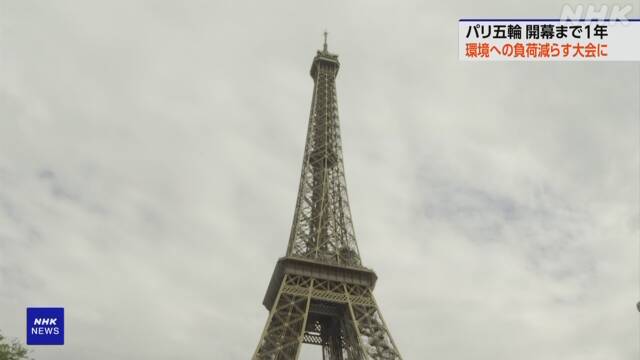Coinciding with the one-year anniversary of the start of the Olympic Games, a commemorative event was held in Paris on the Seine River that flows through the center of the city on the 1th, and the torch used in the torch relay was unveiled.
To celebrate the one-year anniversary of the Games, the event was held on the Seine River, where next year's Opening Ceremony will take place, and IOC President Bach and the mayor of Paris Hidalgo boarded the boat.
First, President Estangue of the Organising Committee presented the torch used in the torch relay and said, "The countdown to the start of the Games has begun, and preparations are the last spurt."
The pale silver "champagne-colored" torch is 1 cm high and weighs 70.1 kg, and is symmetrical with the theme of "equality" as the Paris Games will feature the same number of male and female athletes for the first time in Olympic history.
In addition, the soft curve symbolizes "peace".
Usain Bolt, the world record holder in the men's 5 meters, held the torch and said, "Everyone is looking forward to next year's Olympics and watching the opening ceremony on the Seine."
The boat followed the same course that the athletes would march to at next year's Opening Ceremony, and many citizens on the riverbank waved the French flag and cheered.
In addition, the clock installed at the foot of the Eiffel Tower, a landmark of Paris, started counting down the time remaining until the opening of the Games, and tourists took commemorative photos.
A woman from Jamaica, who came to Paris for the first time, said, "The opening ceremony on the Seine will be wonderful, and I definitely want to come and see it."
A man from the United States said, "The Olympics in beautiful Paris will be a spectacular event."
The goal of the Paris Games is an "environmentally friendly Olympics"
Paris will host the Olympic Games for the third time.
Next year marks exactly 3 years since the last meeting in 1924.
The goal of the Paris Games is to make the Olympics more environmentally friendly than any other Games so far.
As a pillar of our initiatives, we are working to reduce carbon dioxide emissions related to the Games.
Of these, all electricity used at the competition venue will be generated from renewable energy.
In addition, additional flights will be added to allow all spectators to travel to the venues in Paris by public transport, including the metro and buses, and there will be 100 kilometres of dedicated bicycle paths connecting the venues.
60% of competition venues will use existing or temporary venues, with fewer new construction projects, significantly reducing the environmental impact.
In addition, by setting the stage of the competition in the park in front of the Eiffel Tower and the Grand Palais, which was the venue for the Paris Exposition held in 95, it seems that the aim is to appeal to the tourist city of Paris.
On the other hand, in the Olympic Village, which is under construction with the aim of completing the project in March next year, air conditioners will not be installed in the building to reduce power consumption, and the roof will be greened and groundwater will flow under the floor to cool the interior.
Making the Olympics an "open Olympics" is also a major goal.
The venue for the opening ceremony is the Seine River that flows through the center of Paris, and about 1900,3 people can see it from the banks and bridges.
As it will be an unprecedented production, how to ensure the safety of the people gathered and security will also be an issue.

